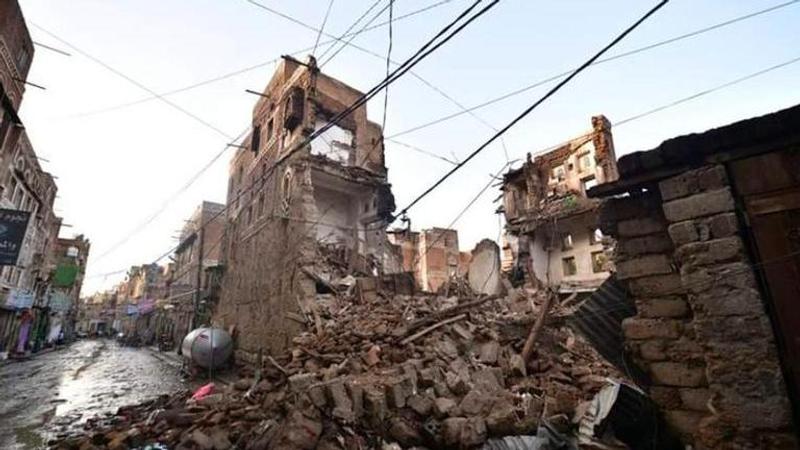Published 16:57 IST, August 10th 2020
UNESCO-listed Old Sanaa houses collapse in heavy rainfall in Yemen
As many as 260 homes were damaged, including the distinctive brown and white mud-brick UNESCO houses which were historic landmarks from the 11th century.

On August 9, Yemen’s Houthi rebels said in a statement that the raging floods wreaking havoc since mid-July in Old City of Sanaa, Yemen, where it exercises stronghold, battered the remaining UNESCO-listed homes into ruins. As many as 260 homes were damaged, including the distinctive brown and white mud-brick houses which were the historic landmarks from the 11th century, a news agency report confirmed. In 2015, an airstrike on capital's historic old city had some of the old heritage sites and iconic structures are known as "jewel" of Islamic culture destroyed already that the UNESCO had condemned.
Houthi-run Health Ministry reportedly said that the devastating floods have left more than 130 dead and caused massive scale destruction in the rebel-controlled part of Yemen, including the capital Sanaa and its historic Old City, which is on UNESCO’s World Heritage List. However, the iconic homes have long been under the threat due to Yemen’s multiple conflicts, food shortages and until recently the pandemic that led to “neglect”. More than 160,000 people had to abandon homes and flee in search of shelter amid heavy flooding and rainfall in the provinces of Hajjah and Hodeida, according to security forces officials, who revealed information on the condition of anonymity as they’re unauthorized to brief the media, agency report confirmed.
Miserable conditions in the war-torn region
Deputy head of the Historic Cities Preservation Authority, Aqeel Saleh Nassar, was quoted as saying that everything “remaining iconic” the city had been now buried under the rubble. While heavy rainfall reduced innumerable homes into debris and mud, women and children were seen making appeals for “help” stranded homeless, as per local reports. The buildings had cracks and weaknesses that the citizens were unable to maintain due to miserable conditions in the war-torn region. The situation was profoundly distressing and historic value and memories enshrined in the structures were scattered to shreds, Nassar revealed, in an agency report.
As many as 5,000 skyrocketing buildings in the old city of Houthis have leaky roofs, of which, 107 homes’ roofs were reportedly collapsed. The authorities were accumulating the relief funds in collaboration with UNESCO and other charities in response to the crisis. Heavy rainfalls and flooding commenced in the region mid-April causing devastation that was declared as the world's worst humanitarian crisis by the UN. To date, over 80 percent of the Yemini population relies on aids for day-to-day survival, according to reports.
(Image Credit: Twitter/ @Yemenias)
(With agency inputs)
Updated 16:57 IST, August 10th 2020




